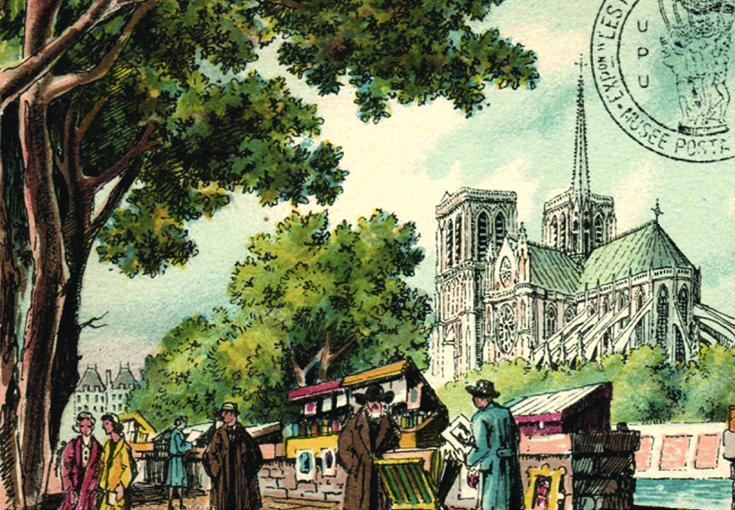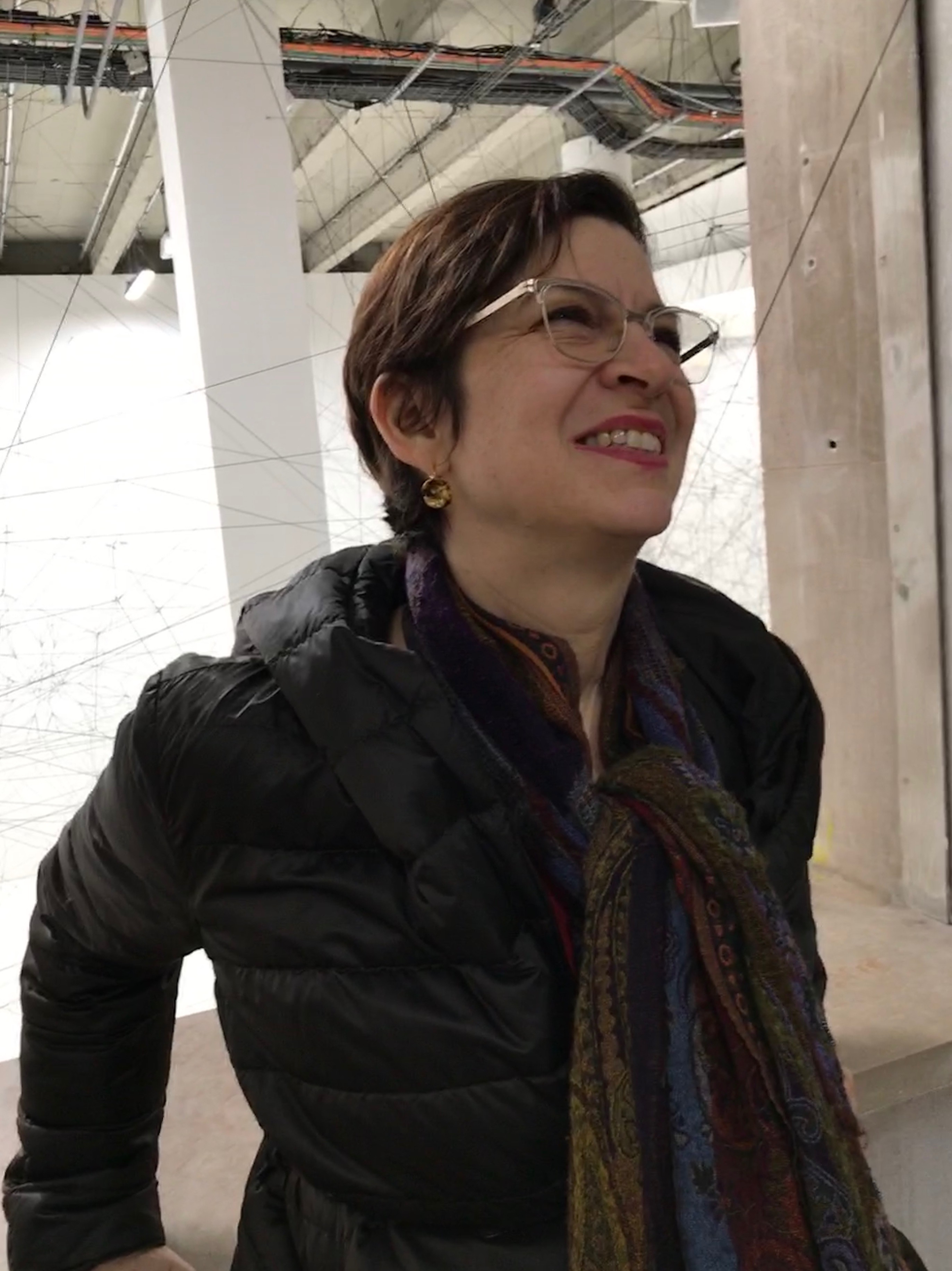Three specialists in historic preservation discuss the restoration of Notre-Dame Cathedral in Paris on the first anniversary of the fire that nearly destroyed it.
On March 9, the Cultural Center of the Lycée Français de New York, canceled an international panel of experts to protect the school against Covid-19. Instead, Pascale Richard, director of the Lycée’s Cultural Center, organized filmed interviews with Pierre-Antoine Gatier and Michel Picaud who had traveled from France to New York to speak at the event. Upon their safe return to France they have continued the dialogue and provided an update with courage and perseverance. We are pleased to present the two filmed interviews and an annotated slide presentation that would have been shown to the public.
A year ago, the roof and spire of Notre-Dame were devastated by fire. Since then, the world has affirmed the cathedral’s cherished place in its cultural and religious identities even as it began to consider how to restore and rebuild it. No one could have expected the disruptions and human fragility of the current pandemic. Yet today’s overwhelming concern for human safety and the suspension of the restoration work highlights the interdependence of the cathedral in ecosystems past and present. Especially in these times, Notre-Dame remains a locus of innovation and modernity, a symbol of hope, identity, and creativity.
In terms of methods and resources in historic and human protection, the lead pollution from its roof has inspired new methods of removing and protecting workers against lead and other toxins. Notre-Dame is also a modern catalyst in the landscape of French philanthropy which is renegotiating a public-private partnership. The emotional importance of the work coupled with the huge budget will be a challenge. As Michel Picaud explains, “the overall reconstruction budget is not yet known. It may surpass the one billion dollar mark when complemented by an endowment for the maintenance of the cathedral after the reconstruction.” Americans have historically been crucial in funding post-war reconstructions of preeminent French sites where French patrons have been less forthcoming and both public and private sectors in France have not yet made good on their pledges: only one hundred fifty Euros have been collected of which ten come from the US-centered non-profit Friends of Notre-Dame de Paris.
Notre-Dame is re-invigorating the public awareness of the debate over the place of historical buildings for modern architecture. Many wonder in what form the future roof and spire should be built and recollect the controversy over the Louvre pyramid. Where president Macron has repeatedly called for an innovative and modern design, Picaud’s community of donors wishes to see the cathedral restored to the state it was in on the morning of April 15, 2019 and love the roof and spire as it was. Likewise, I would add that most historians and specialists call for the spire’s preservation as integral to the building and the work of the great nineteenth-century restorer and rationalist architect, Eugène-Emmanuel Viollet-le-Duc. The restoration of this building (1843-1864) was his masterpiece and pioneered the Monuments Historiques, the French institution of historic preservation. Today this venerable professional corps adheres to the latest principles of ICOMOS such as the Venice Charter of 1964 which prescribes restoration to the last known state using traditional techniques.
Pierre-Antoine Gatier, an Architecte en Chef des Monuments Historiques, cites technical reasons to be cautious about how much the roof and spire can be re-built identically until the work site progresses. He explains that for Notre-Dame, the decisions will be made carefully and only after a painstaking process in three phases: 1. stabilization, diagnosing the condition of the structure, 2. repair, and preservation, 3. design and building. Even under pre-pandemic conditions, the phasing and the size of the team could not be rushed or amplified.
Gatier believes that modern design will take place through the urban project from 2017 by architect Dominique Perrault, Mission Ile de la Cité which plans to densify, enclose, and knit together the barren spaces of Baron Haussmann who bulldozed the island’s medieval fabric in the 1860s. For example, the cathedral has had a historical role in curing the sick with its neighboring hospital the Hôtel Dieu, rebuilt and moved by Haussmann but still symbolically located next to the Cathedral. In this project one-third of it would be re-purposed as a multi-functioning commercial and residential space that would help to resuscitate the Cathedral’s neighborhood ties that were severed by Haussmann all the while maintaining its traditional role of curing the sick.
The temporary closure of the site for the health of the workers leaves the building teetering on the edge of uncertainty. Economic hardships will also affect the fundraising for the restoration. As Michel Picaud explains “Clearly the pandemic dramatically changes things for the project right now. The securisation phase of the cathedral started in April 2019 just after the fire, was to be completed within 3 months when the works were temporarily stopped as from March 16, 2020.” In other words, the stabilization phase has not been completed.
It seems unlikely that the restoration and rebuilding will be complete in the five-year timespan called for by President Macron. Before the crisis there was a chorus behind the plan to celebrate a mass inside the cathedral in five years, even if its restoration was not complete, reminding us that Notre-Dame is a living monument with a unifying and religious past. Today Michel Picaud simply says, “Resuming the works on Notre-Dame will certainly be a big sign of hope at worldwide level after the terrible health crisis.”
WATCH FULL INTERVIEWS:
About the Author :
Victoria Sanger specializes in urban history, military architecture, and cartography of the Early Modern period in Europe and the United States. She earned her Ph.D. in art history at Columbia University with a thesis on Vauban as a town planner and has taught MA students at the architecture school of Columbia (GSAPP) since 2009. She lived in France from 1995 to 2010 where she taught these subjects as well as the history of Paris and the Renaissance at the University of Tours and at Reid Hall (Columbia and SMU).


